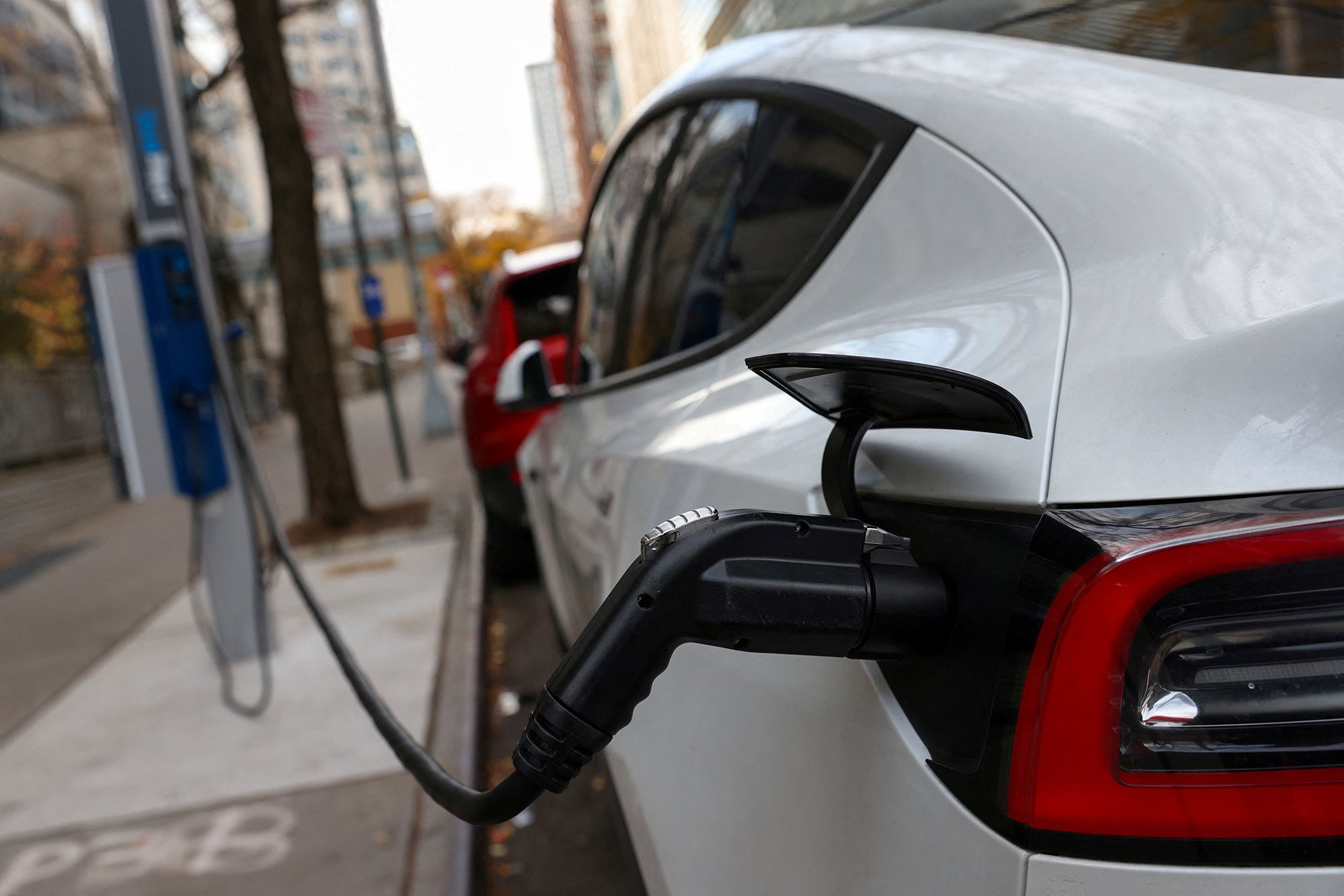Tax credit confusion could create a rush for electric vehicles in early 2023
(CNN) — As the new year begins, a number of popular electric vehicles, specifically some Tesla and General Motors models, could be eligible for $7,500 worth of tax credits they weren’t eligible for in 2022. But that eligibility may last only last a few months.
That’s because limitations on new tax credits enacted in August as part of the Inflation Reduction Act won’t be put into force all at once, the Treasury Department announced this week. That means the rules will, temporarily, be more generous, allowing higher tax credits on more electric vehicles, for the first few months of the new year.
The US Treasury Department, which is implementing the rules, recently announced that rules for some of the new restrictions on the tax credits — including around where the vehicle’s battery pack is assembled and where the minerals used in it came from — were being postponed until at least March of 2023, when it announces proposed rules around that part of the requirements. According to language in the legislation, though, just the publication of the “proposed guidance” around these rules, which Treasury said would happen in March, will immediately trigger the reductions in tax credits. But some of the new rules are taking effect as originally scheduled in January. That leaves a roughly a three-month window in which some vehicles could be eligible for much higher tax credits than they will be eligible for later on.
General Motors, for example, has already said that once the full restrictions come into force — whenever that happens — its electric vehicles will only quality for a $3,750 tax deduction. It’s expected to be two or three years before GM vehicles can, once again, qualify for the full $7,500 tax credit, the company has said.
While that could create a buying opportunity in the first months of the year, the downside is that it just adds to confusion around what is already a baffling set of rules — even by tax regulation standards.
“I was kind of hoping for more clarity, not less,” said Chris Harto, a senior policy analyst with Consumer Reports. “It seems like things just seem to get more confusing each time they say something.”
Essentially, the tax rules are designed to incentivize automakers to make their electric vehicles and all the parts of those vehicles, as much as possible, in the United States, or in countries with which the US has trade agreements. They’re also designed so tax credits don’t go to wealthy Americans buying expensive luxury vehicles. The latest announcement, which will temporarily open up more tax credit money, is likely mostly a good thing for consumers.
Figuring out who and what qualifies
The lopsided tax credit at the start of the year is just one of several potential sources of confusion.
Under the new EV tax credit rules, the Chevrolet Bolt EV and EUV are eligible for tax credits in the new year. They had previously been ineligible because, even though they’re built in North America — one of the requirements under the new rules — General Motors, Chevrolet’s parent company, and Tesla had long ago sold more than 200,000 plug-in vehicles. That was the limit for any given manufacturer under the outgoing tax credit requirements. New rules, enacted as part of the Inflation Reduction Act, do away with that limit, though.
Still, not every buyer and not every electric vehicle will be eligible for credits. For instance, besides the requirement that the vehicle must be built in North America, there will be restrictions on its price, too. If it’s an SUV, its sticker price must not be higher than $80,000 and, if it’s a car, not more than $55,000.
As a result, most Tesla models, including the Model X SUV and Model S sedan and even the Model 3, as it’s currently priced on Tesla’s web site, still won’t be eligible for tax credits. And the Mercedes EQS SUV, which is assembled in the United States and is currently eligible for tax credits, according to an IRS web site, will become ineligible in the new year.
“It shuffles the deck as to who’s eligible, and then the deck will get shuffled again when this guidance comes out [in March],” said Harto. “And it just makes a giant mess for consumers, and automakers, and dealers.”
Also, no flipping allowed. The person purchasing the vehicle has to be the end user. If you’re purchasing the vehicle just to immediately resell it to someone else, you can’t claim the credit.
There are also limits on the buyer’s income. The purchaser can’t have a “modified adjusted gross income” over $150,000 for an individual, $300,000 for a couple filing jointly, or $225,000 for a single head of a household. These restrictions will keep many luxury electric vehicle buyers from getting tax credits.
The best thing vehicle shoppers can do is ask whether the specific vehicle they’re buying qualifies for a tax credit, said Andrew Koblenz, vice president for legal and regulatory affairs at the National Automobile Dealers Association. Some vehicle models are made in more than one factory, so two identical looking electric SUVs on the same dealer lot might not both qualify or might not qualify for the same amount of credit.
“It’s a great time to be shopping. It’s great that there will be more vehicles eligible now but you’ve still got to make sure the one you’re interested in is eligible,” Koblenz said. “You need to ask your dealer and your manufacturer that question and you’ve got to make sure that you qualify, too.”



